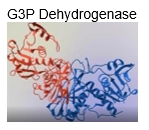Multiple Choice
True or False: At pH 2, Gln & Met R-groups can form a salt bridge to stabilize tertiary structure.

 Verified step by step guidance
Verified step by step guidance
 2:20m
2:20mMaster Tertiary Structure of Protein with a bite sized video explanation from Jason
Start learning
